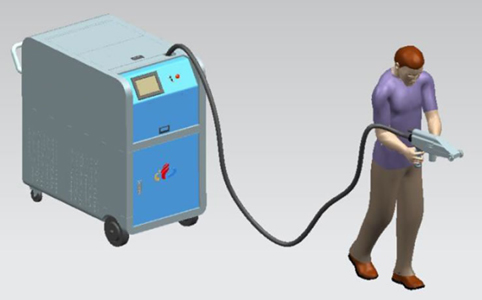Lasers for Flow Cytometry
Flow Cytometry
Flow cytometry is a method for the quantitative determination of cellular properties, analysing light incident on a focussed stream of fluid containing a heterogenous population of biological samples.
Lasers for Flow Cytometry
Cells, or other particles, are individually passed through a light path at high speed while suspended in a tightly focussed stream of fluid, causing an energy change in the incident light by scattering or fluorescent emission.
The resulting light is detected and examined, allowing the various properties of thousands of cells to be determined or discriminated every second - such as size, shape, health, surface properties, proteins, by-products, as well as allowing particular structures or components of the cell to be directly examined.
This method is a particularly powerful because it enables quick, precise, non-invasive data collection of many different parameters simultaneously – often utilising many different light sources during the same measurement, as well as fluorophore labels to enhance or better spatially restrict the signal by binding with specific constituent parts of the cell. It is even possible to discriminate the measured cells in real time, allowing complex liquids to be electrostatically filtered on a cellular level.
There are numerous applications, particularly in the Life Sciences, though also in the fields of microbiology, food quality control, plant and animal cytology, among others. In immunology, for example, flow cytometry is used to identify, separate and characterize different immune cell subtypes based on their size and morphology.
There are several requirements when considering a suitable laser for flow cytometry:
1.High power
High power output will increase the signal strength measured, particularly for scattering effects, though this should be balanced with consideration of damaging the sample to be measured.
2.Power stability
Power stability and imperceptible power noise is also vital. For example, the magnitude of light scattering back towards the light source is used to determine the size of the cell and changes in the incident power level during the measurement will cause inaccuracy.
3.Beam quality
Excellent beam quality and pointing stability are also key parameters for ensuring consistent and accurate analysis.
UniKLasers design and manufacture single frequency laser sources with unrivalled wavelength stability, narrow linewidths and long coherence lengths over a range of wavelengths within a small footprint. We currently offer single frequency lasers in the red and green areas of the visible spectrum with our Solo 640 Series and Duetto 532 Series respectively; to complement our Solo 1064 Series.
 English
English Français
Français Deutsch
Deutsch euskara
euskara Русский язык
Русский язык Italiano
Italiano Português
Português Nederlands
Nederlands Polski
Polski Greek
Greek Lietuva
Lietuva Türkçe
Türkçe 日本語
日本語 한어
한어 中文
中文 தாமில்
தாமில் فارسی
فارسی हिंदी
हिंदी Tiếng Việt
Tiếng Việt ภาษาไทย
ภาษาไทย Pilipino
Pilipino Indonesia
Indonesia தாமில்
தாமில்





